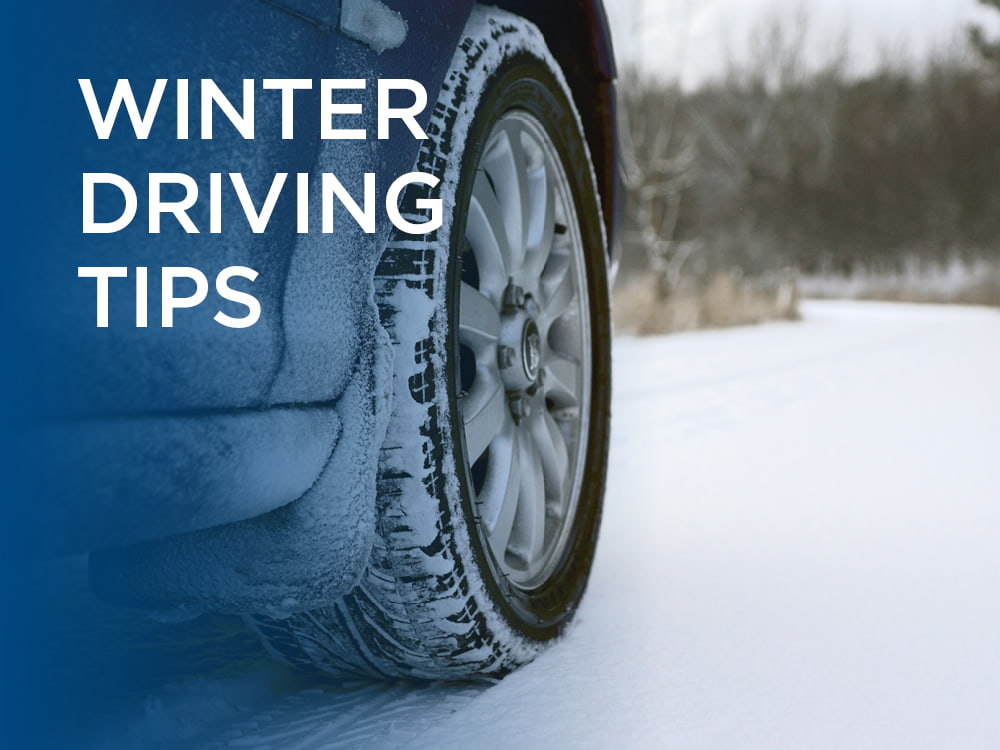Loading...
Loading...
- Home
- Loss Control
- Loss Control Insights
- Winter Driving Tips
Driving in the winter can be very dangerous. The number one cause of death during winter storms is vehicle accidents. If possible, avoid driving during winter storms. However, if you have to go out, it is important to be prepared. Stay safe by using the following winter weather driving tips.
What to Do Before Driving in Winter Weather
If you choose to drive in the winter, it is important that your vehicle is ready to drive in bad conditions. Use these tips to prepare your vehicle for winter weather.- Defrost front and back windshields and scrape any remaining snow, ice and dirt from mirrors, sensors, lights and top of vehicle
- Ensure the vehicle is warmed up before driving; do not leave the vehicle running in the garage, as it could lead to carbon monoxide poisoning
- Install snow tires or all-weather tires, depending on your area’s weather conditions
- Check tire pressure and tread
- Put a snow brush or scraper in your vehicle
- Keep gas tank at least half full
- Check battery and cooling systems
- Ensure wipers and wiper fluid are in good working order
- Start your vehicle every few days to make sure the battery does not die
- Check the forecast before you leave
- Keep a winter survival kit in your vehicle in case of emergency
What to Do While Driving in Winter Weather
Even if you are used to driving in the winter, you still need to take extra precautions. Nearly a quarter of weather-related vehicle crashes happen on snow, slush or ice. Stay alert and follow these driver safety tips for winter weather.- Don’t rush – Driving slowly is one of the best ways to stay safe while driving in winter weather. It can be hard to slow down or regain control of a vehicle on slippery surfaces, even with snow or all-weather tires. Give yourself extra time so that you are not in a rush to get to your destination.
- Keep your distance – Because roads will be wet or icy, it will be harder to stop. Allow yourself at least three times the usual distance between yourself and the vehicle in front of you. Also, avoid passing plows and trucks, as the road can be worse in front of them.
- Maintain traction – Put your vehicle in a low gear and avoid using cruise control. This will help reduce the chances of accelerating from sliding on icy surfaces without the driver noticing.
- Use your lights – Even during the day, winter weather conditions can reduce visibility. Using your lights will help you and other drivers see better and avoid collisions.
- Stay alert – Avoid driving drowsy or under the influence of any substances. If you are not feeling up for the drive, stay home.
How to Stop Your Car From Skidding
While using caution when driving in winter weather can help prevent skids, they can still happen. If your vehicle begins to skid, take your feet off the pedals; do not brake or accelerate. Turn your steering wheel in the direction you want to go. If that does not work, straighten your wheels. It is important to not panic and allow your vehicle to slow down in order to stay in control.What to Do After a Winter Accident
Poor visibility and slippery roads can lead to accidents, even when you take precautions. Follow these steps to stay safe if you are in a winter vehicle accident.- Turn on your hazard lights and call 911 as soon as you can
- If possible, move your vehicle off the road
- Wait in your vehicle if it is safe or wait in another vehicle to avoid the cold and incoming traffic
- If it was a multi-vehicle accident, exchange insurance, vehicle and contact information
- If your vehicle is stuck, do not spin your wheels; instead try turning your wheels from side to side, digging out your wheels and pouring sand or cat litter to gain traction
- Utilize your winter survival kit to stay warm, alert and connected to the outside world
Get in touch
Need help? We’re here for you! Whether you have questions or need personalized assistance, your local office is ready to support you.
Loss Control Insights
Stay informed with the latest news and receive actionable safety tips, all carefully curated by our team of experts.
